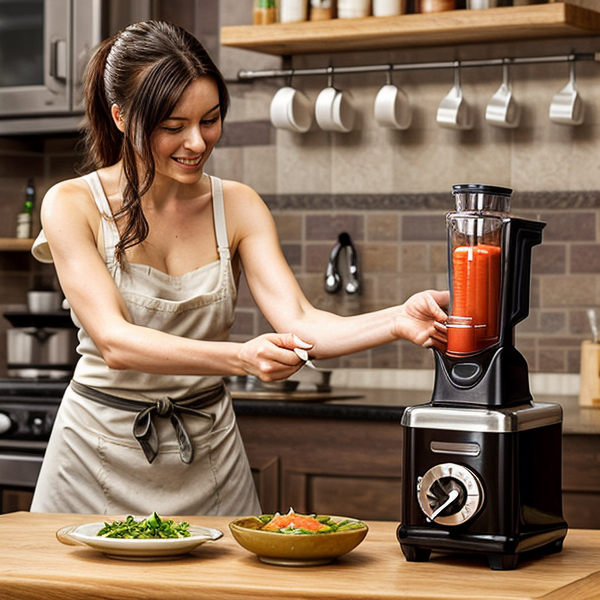Immersion Blender: Blend Soups Directly in the Pot

[Immersion Blender: Blend Soups Directly in the Pot](https://www.example.com/immersion-blender-blend-soups-directly-in-the-pot/)
Introduction
————
An immersion blender, also known as a handheld blender or stick blender, is an essential tool for any kitchen. It allows you to blend ingredients directly in the pot or container they are cooked in, saving time and effort compared to transferring hot liquids between containers. In this article, we’ll explore the benefits of using an immersion blender for making soups and how to use it effectively.
Benefits of Using an Immersion Blender for Soup
—————————————-
1. Easy to Use: Unlike traditional stand mixers or food processors, which require some assembly and preparation before use, an immersion blender is ready to go right out of the box. Simply plug it in, turn it on, and start blending.
2. Space-Saving: Since an immersion blender doesn’t have a large base unit like a stand mixer, it takes up very little counter space when not in use. This makes it ideal for small kitchens or those with limited storage.
3. Versatility: An immersion blender can be used for more than just blending soups. You can also puree fruits and vegetables, make sauces, whip cream, and even grind coffee beans.
4. Consistent Results: With an immersion blender, there’s no need to worry about leaving chunks of food behind or over-processing your soup. The blades are designed to reach every corner of the pot, ensuring consistent results every time.
5. Cleanup: Cleaning an immersion blender is generally easier than cleaning a stand mixer or food processor. Most models have detachable parts that can be washed in the dishwasher or by hand.
How to Use an Immersion Blender for Soup
————————————
Now that you know the benefits of using an immersion blender for soup, let’s take a look at how to use one effectively.
1. Choose the Right Container: When making soup, it’s important to choose a container that is safe for both your immersion blender and the heat source you’re using. Glass or ceramic containers work well, but avoid metal or aluminum, as they can react with acidic ingredients.
2. Prepare Your Ingredients: Before starting to blend, make sure all of your ingredients are prepped and ready to go. Chop larger pieces into smaller chunks, and add any seasonings or spices to the pot.
3. Heat Your Soup: Bring the soup to a simmer over medium-low heat, stirring occasionally. This will help loosen the solids and allow them to blend more easily.
4. Assemble the Immersion Blender: Fill the shaft of the immersion blender with a few tablespoons of soup. Make sure the blades are completely submerged in the liquid.
5. Blend in Short Bursts: Start by blending the soup in short bursts, pausing to scrape down the sides of the container if necessary. Gradually increase the time you spend blending each batch until the desired consistency is achieved.
6. Serve and Enjoy: Once your soup is perfectly blended, carefully pour it into serving bowls and enjoy!
Tips and Tricks for Using an Immersion Blender
—————————————-
Here are a few additional tips and tricks to help you get the most out of your immersion blender:
* Always hold the immersion blender by the handle, never the head.
* Avoid overfilling the shaft of the blender, as this can cause splattering.
* Use caution when blending hot liquids, as steam can escape suddenly.
* For thicker mixtures, such as nut butters or frozen drinks, pause frequently to scrape down the sides of the container.
* To clean the blades, run cold water through the shaft while holding the blender upright.
Conclusion
———-
In conclusion, an immersion blender is a versatile and convenient tool for making soups and other recipes. With its ease of use, space-saving design, and consistent results, it’s no wonder why so many home cooks rely on their trusty immersion blenders. So next time you’re in the market for a new kitchen gadget, consider adding an immersion blender to your arsenal.
